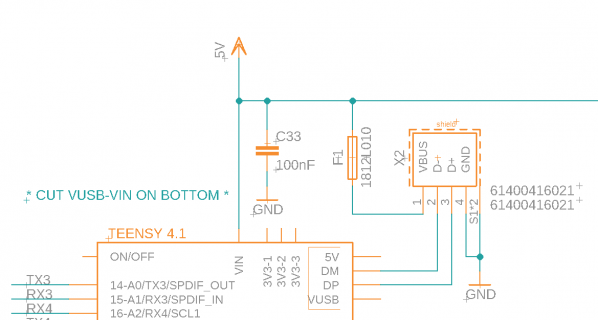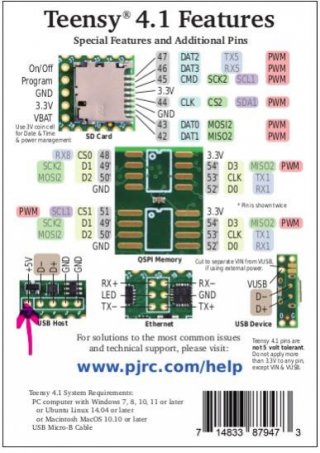Hi
I use the teensy 4.1. I use external 5V power. So the external 5V goes to VIN. And the track from the device usb 5v is cut.
So far so good.
But i want to use the USB host mode. And I see there is a switch/protection TPD3S014. Since there is also a 500mA fuse, i can not supply 2A to the devices i connect to my host.
How can i increase the power the host can supply?
Can i simply use my 5V and connect it to the host 5V usb connector? Thus not using the VHST pin?
Or will that not work?
thanks
mark
I use the teensy 4.1. I use external 5V power. So the external 5V goes to VIN. And the track from the device usb 5v is cut.
So far so good.
But i want to use the USB host mode. And I see there is a switch/protection TPD3S014. Since there is also a 500mA fuse, i can not supply 2A to the devices i connect to my host.
How can i increase the power the host can supply?
Can i simply use my 5V and connect it to the host 5V usb connector? Thus not using the VHST pin?
Or will that not work?
thanks
mark



